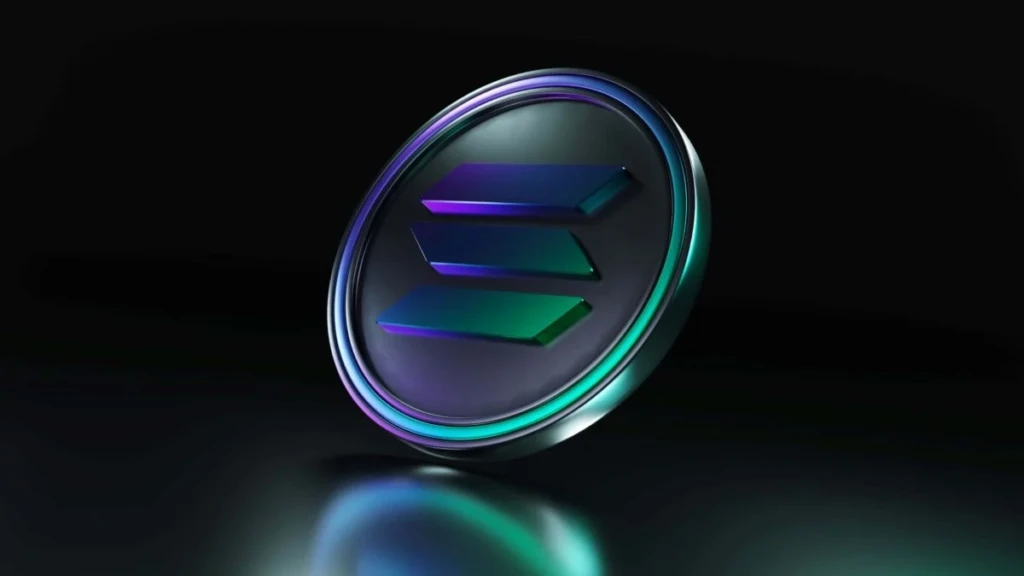Solana DeFi Is Back—and Bigger Than Ever
Solana DeFi is undergoing a dramatic transformation. Once dismissed after network outages and ecosystem struggles, Solana has returned with a vengeance. Its latest strategic overhaul, combined with technical innovation and renewed investor confidence, is reshaping the blockchain’s DeFi narrative.
At the forefront of this resurgence is the REX-Osprey Solana + Staking ETF (SSK), which has seen a significant uptick in institutional demand. Behind the scenes, Solana is executing a methodical pivot—one focused on scalability, developer incentives, and ecosystem robustness.
This is not just a rebound. It’s a recalibration.
Solana’s Strategic Pivot: From Chaos to Cohesion
A Fresh Blueprint for DeFi Growth
Over the past year, Solana has realigned its development roadmap with an emphasis on scalability, ecosystem incentives, and developer empowerment. After a rocky 2022–2023, the blockchain has moved swiftly to resolve legacy issues and position itself for the next phase of DeFi evolution.
Key Innovations Powering Solana DeFi
- Proof-of-History (PoH) Enhancements: Improvements to Solana’s core consensus mechanism have reduced block confirmation times and increased reliability—two long-standing concerns in its early years.
- Smart Contract Optimizations: Updates have made deploying and interacting with DeFi contracts more affordable and accessible to developers.
- Developer Incentive Programs: Grants and hackathons are fueling a new wave of talent and protocols, helping Solana regain its allure among builders.
These changes have led to a surge in developer activity and application deployment, much like the early DeFi summer on Ethereum—but with faster transactions and lower fees.
Institutional Interest: The REX-Osprey Catalyst
The launch and subsequent demand for the REX-Osprey Solana + Staking ETF (SSK) 1 has sent a clear signal: institutional investors are back in the Solana game. This product, offering exposure to SOL and staking yields, has been likened to a gateway for traditional finance into Solana DeFi.
According to Morningstar, ETFs tied to blockchain infrastructure and staking assets have seen sharp increases in volume—SSK included.
“You don’t get this kind of institutional confidence unless the fundamentals are aligning. Solana has made believers out of skeptics.” — Crypto Markets Analyst, CoinDesk 2
Surging Metrics Reflect Ecosystem Maturity
TVL, Transactions, and User Growth: The Trifecta
Solana DeFi’s health is now measurable—and it’s growing fast.
| Metric | Pre-Strategy (2024) | Post-Strategy (Mid-2025) |
|---|---|---|
| Total Value Locked (TVL) | $100M | $500M |
| Daily Transactions | 1,000 tx/day | 5,000 tx/day |
| Active DeFi Users | 10,000 | 50,000 |
| Quarterly Network Revenue | — | $271M (Q2 2025) |
Notably, Solana posted a 43% annualized return in Q2 2025, outperforming many competitors including Ethereum and Tron in efficiency-based ROI.
New DeFi Protocols Flourish on Solana
Lending, DEXs, and Yield Farming Lead the Way
Solana DeFi is no longer just about speed. It’s about utility and diversity of use cases.
Lending and Borrowing Protocols
Solana now hosts a suite of lending apps that offer flexible collateralization, better APYs, and near-instant settlement speeds—helping it attract liquidity from both retail and institutional lenders.
DEX Activity Grows
Decentralized exchanges like Jupiter and Orca have seen growing trade volumes, benefiting from Solana’s low latency and minimal gas fees. Orca in particular has gained attention for its user-friendly interface and efficient swaps.
Yield Farming Expands
Innovative yield farming models using composable DeFi primitives have brought higher ROI opportunities to users staking stablecoins or SOL pairs—further increasing liquidity in the ecosystem.
How Solana DeFi Stacks Up Against Ethereum
While Ethereum’s DeFi dominance is undisputed, Solana presents a compelling Layer-1 alternative—especially for users and developers priced out by Ethereum’s gas fees or complexity.
Solana vs. Ethereum: Key Differences
| Feature | Ethereum | Solana |
|---|---|---|
| Consensus | Proof of Stake + L2 Rollups | Native Proof-of-History (PoH) |
| Fees | High (variable) | Low (pennies per tx) |
| Speed | Slower, depending on L2s | Fast (~400ms block time) |
| Developer Entry | High barrier (Solidity) | Rust-friendly, grant-backed |
| Ecosystem Maturity | High | Rapidly accelerating |
While Ethereum continues to scale via rollups like Arbitrum and Optimism, Solana’s integrated Layer-1 architecture delivers a simpler user experience—no bridges or rollups required.
Solana’s Long-Term Strengths—and Remaining Challenges
Advantages
- Scalability baked into Layer-1
- Ultra-low fees for DeFi users
- Strong developer tooling and incentives
- Institutional products like SSK driving trust
Challenges
- Ethereum’s entrenched dominance and network effects
- Regulatory uncertainty around staking products and DeFi
- Ongoing need for technical audits and security hardening
FAQ: Solana DeFi
What is driving Solana DeFi’s resurgence?
Solana DeFi is growing due to technical upgrades, improved scalability, strategic incentives, and rising institutional interest via products like the REX-Osprey ETF.
Why is institutional demand rising for Solana?
The REX-Osprey Solana + Staking ETF has made it easier for institutional investors to access SOL and DeFi yields, signaling long-term confidence.
What makes Solana DeFi different from Ethereum?
Solana offers a high-speed, low-fee Layer-1 experience without relying on Layer-2 rollups, providing simpler and more cost-effective access to DeFi.
What kind of DeFi apps are thriving on Solana?
Lending platforms, DEXs, and yield farming protocols are leading Solana’s DeFi charge, drawing users with better rates and smoother UX.
Is Solana DeFi secure and sustainable?
While still evolving, Solana’s core upgrades and third-party audits are helping improve reliability. Its growing TVL and active user base point to increasing maturity.
Conclusion: A Reinvention Worth Watching
Solana DeFi is no longer a speculative gamble—it’s a coordinated comeback. By blending technical prowess with strategic execution and institutional credibility, Solana has reasserted itself as a formidable DeFi platform.
Its combination of low fees, high speed, and growing developer activity makes it an increasingly attractive alternative to Ethereum and other Layer-1s. While challenges remain—from regulatory headwinds to maintaining momentum—Solana’s trajectory suggests it’s no longer the underdog.
If current trends continue, Solana DeFi might not just be a comeback story. It could be the next big phase in decentralized finance.

